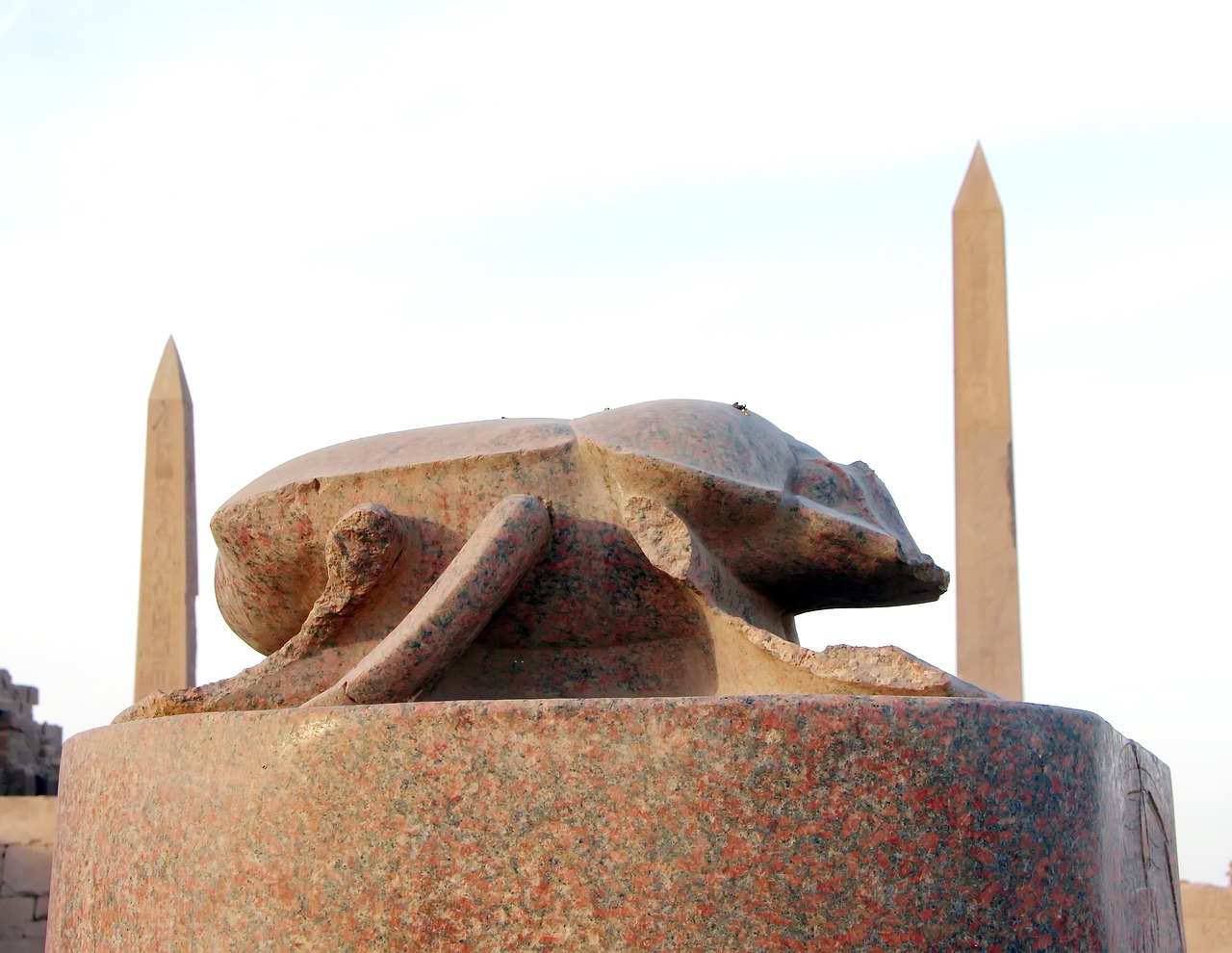Khepri, also known by various names such as Kheper, Khepera, and Chepri, is among the most celebrated deities in Egyptian mythology, closely linked with the scarab or dung beetle (Scarabaeus sacer). Ancient Egyptians observed this beetle rolling dung into a sphere and transporting it to its burrow, drawing parallels between this act and the sun’s movement across the sky. The comparison was further emphasized by the beetle’s antennae positioning, which mirrored the solar disc flanked by a pair of horns often seen in depictions of deities.
One intriguing narrative depicts Khepri as the one who pushed the sun across the heavens, differing from other myths where the sun journeyed by the back of goddesses like Nut or Hathor, or traveled in a divine vessel. Khepri was frequently illustrated pushing the sun before him, a symbol of a continuous motion. Each night, he was said to thrust the sun into the underworld, only for it to rise again each morning. The term “kheper” translates to “to come into being” or “to emerge,” which reflects the cycle of life Khepri represents.
The female dung beetle lays her eggs within the dung and feeds them until they mature. Egyptians believed these young beetles appeared spontaneously from their burrows, akin to creation from nothing, paralleling the self-generative nature of Atum. Furthermore, given that these beetles also laid eggs in carrion, ancient Egyptians speculated that they arose from decaying matter, hence Khepri’s strong association with themes of renewal, rebirth, and resurrection.
Khepri occupies a pivotal position in several important texts, including the “Book of the Dead” and the “Amduat.” Scarab amulets, often placed over the heart of the deceased during mummification rituals, served to protect them in the afterlife. These amulets bore inscriptions to ensure that the heart would not testify against the person during the judgment against Ma’at’s feather, symbolizing truth.
Over time, Khepri became deeply intertwined with the sun itself, particularly its emergence at dawn, symbolizing life’s cyclical return. He is associated with other solar deities like Atum, the creator god, Nefertum (the beautiful young Atum), and Ra, who assimilated many characteristics of Atum. In this celestial hierarchy, Khepri represents the newborn sun at dawn, Nefertum symbolizes the fresh sun, Ra signifies the midday sun, and Atum denotes the setting sun. In later funerary references, Khepri and Atum were often depicted as a ram-headed beetle, exemplifying the triumph over death.
Khepri’s earliest references can be found in the Pyramid Texts, although artifacts suggest that his worship may predate this documentation, with rudimentary scarabs discovered from the Neolithic era (7000-5000 BC). His reverence peaked during the New Kingdom, though no temples or cult dedicated solely to Khepri have been uncovered. It is believed that most, if not all, Egyptian temples housed a statue of him. The scarab amulet became immensely popular, employed not just in mummification rites, indicating Khepri’s appeal among the masses and the elite, with pharaohs frequently embedding his name within their titles.
Khepri is primarily depicted as a scarab beetle, although occasionally represented as a man with a scarab head. Artwork often shows him in motion, pushing the sun, and he is recurrently portrayed in funerary contexts, traversing the underworld on a solar barque. Owing to his rebirth and underworld associations, Khepri is sometimes shown adorned with the atef crown linked to Osiris.



